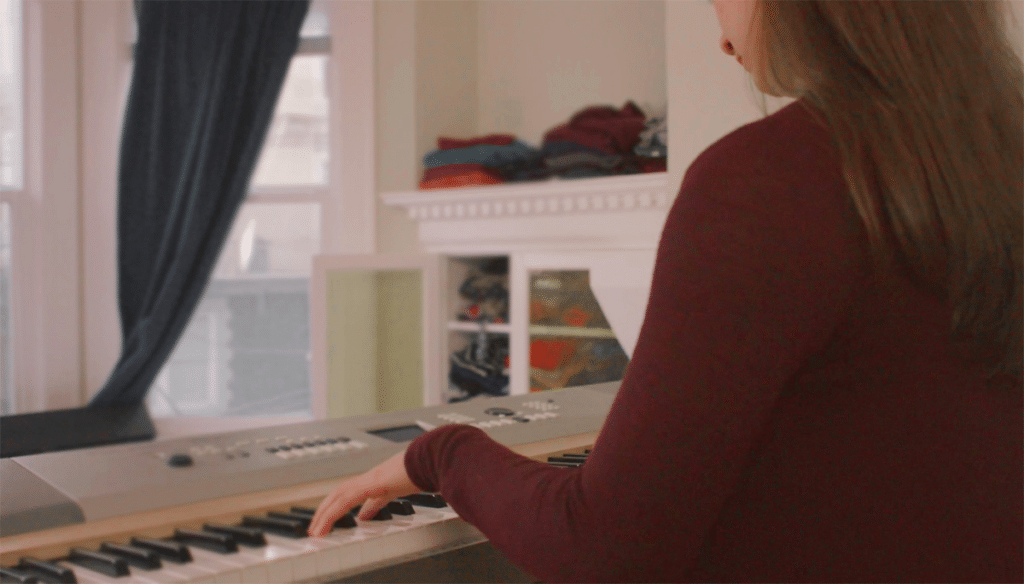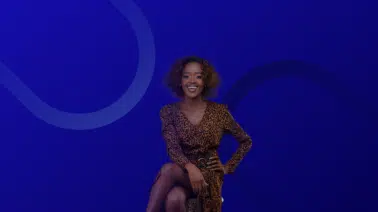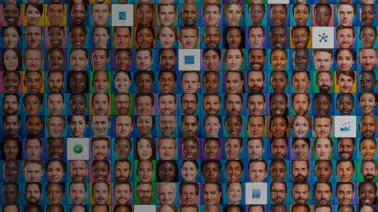We’ve interviewed Kelly Marchisio on several occasions previously. It’s understandable why we would—hers is a very compelling story. And we’re certainly not the only ones to have taken interest; among other things, she’s recently been featured in The New York Times. Her path is unique, and her achievements significant.
Building Something
In a recent conversation, she said something really quite remarkable, and it’s not something that we hear very often these days:
“I think people don’t really consider programming to be an artistic thing, but there are so many ways to build something.”
This emerged in the course of Kelly describing what led her to programming in the first place, and how she understands its connection to other interests and passions in her life. Kelly is a singer and musician, and finds many important parallels between the two disciplines.
You can see a short video of Kelly here, which includes a wonderful snippet of her singing!
Is Programming Art?
What Kelly does in making her statement above, is produce a somewhat unusual twist on what is now the long-running question of whether programming is art. I say long-running, because the question has certainly remained up for debate at least throughout my own lifetime; Donald Knuth’s influential book “The Art of Programming” was published in 1968 after all, and the issues it raised then remain under close consideration even today. No less a figure than Guido van Rossum (author of the Python programming language) has spoken quite clearly on the matter, and has referenced Knuth is doing so:
I’m with Knuth’s definition (or use) of the word art. To me, it relates strongly to creativity, which is very important for my line of work. If there was no art in it, it wouldn’t be any fun, and then I wouldn’t still be doing it after 30 years.
Art vs. Craft
What is really intriguing about Kelly’s statement is the latter half: “there are so many ways to build something.” Equating art and the act of building something evokes a sense of craftspersonship, and calls to mind debates around fundamental distinctions between art and craft. In the process of scouring the web for commentary around these issues, I discovered a blog written by Ruben Verborgh, who describes himself this way:
I’m a researcher in semantic hypermedia at Multimedia Lab, a research group of iMinds and Ghent University, and a postdoctoral fellow of the Research Foundation Flanders.
In a post entitled Programming is an Art, Verbogh writes the following:
Programming is an art and therefore, we are artists. However, we’re not the kind of artists that create purely for beauty. We are functional artists. We have a functional task as well as the duty to write beautiful code, because it is effective and thus lasts. Writing elegant code is our job.
and
I indeed consider programming a creative act, which necessarily involves aesthetics. And then, some people consider aesthetics the enemy of the pragmatic: “don’t spend time writing beautiful code when you can write effective code”. However, I argue that my sense of beauty serves pragmatism much better, because it leads to more concise and maintainable code, and is thereby far more effective.
Steampunk Programming?
There are fascinating insights, though honestly, I don’t know that I’d have been so taken by all this—both Kelly’s evocation of craftspersonship, and Verbogh’s idea of the “functional artist”—if it wasn’t for a post that was recently published on our Udacity Business Blog. The post is entitled Your Next Great Tech Hire May NOT Have A Computer Science Degree. And That’s A Good Thing. In simplest form, the core premise of the post is that great hires can come from multiple directions, and an “alternative” background may in fact be a good thing.
Having said all the above about alternative backgrounds, we’re not saying you should immediately run out and hire a group of ballet dancers, DJs, language poets, and steampunk sculptors to build your new IT department. If your company has tech needs, you’re going to want developers, engineers, and data scientists. What we’re saying, is that you shouldn’t necessarily eliminate those with alternative backgrounds, because it’s quite likely you’ll cut yourself off from landing those truly elusive diamonds-in-the-rough.
Studies have in fact shown that teams comprised of individuals with different backgrounds often perform much better than comparatively mono-dimensional groups. A 2014 Mckinsey study found that diverse teams can stimulate innovation and lead to financial gain for a company.
Circling all the way back to Kelly’s original statement, and considering the example she herself represents, it’s clear that while the question of whether programming is art or not will likely rage on, the question of whether creative people can find happiness, success, and fulfillment through programming is easily and definitively answered. The answer is yes.




